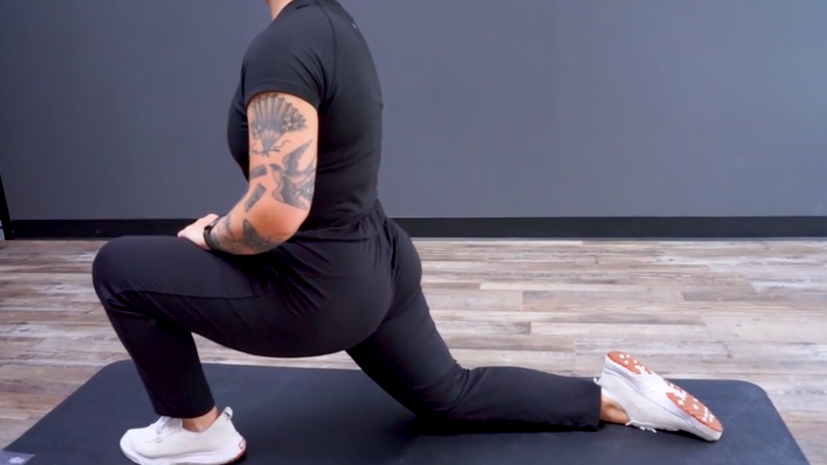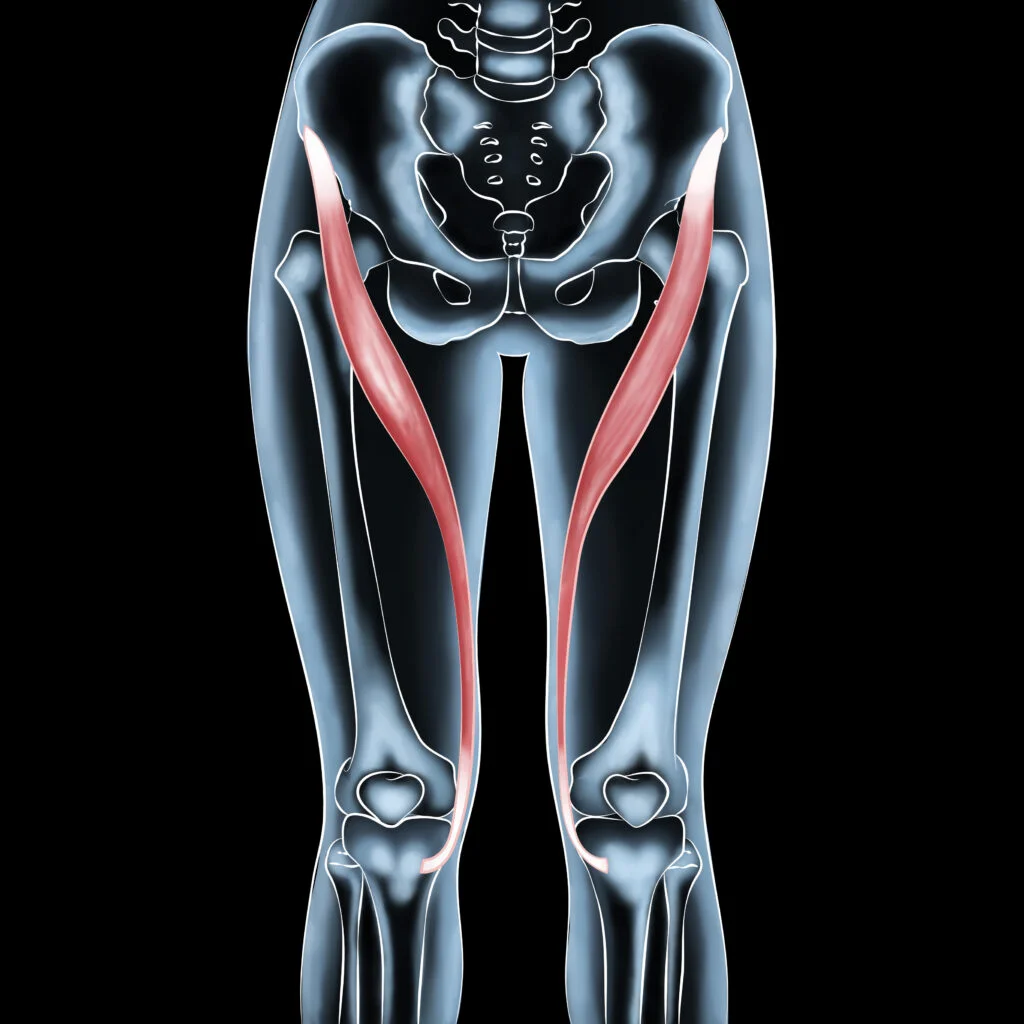The sartorius muscle is a long, thin muscle that plays a crucial role in hip and knee movement. For active individuals in Edmonton and Sherwood Park, it’s essential to keep this muscle healthy and functional to avoid discomfort or injury during sports and exercise. In this article, we will explore the common causes of sartorius muscle pain, how to treat it, and ways to prevent future injury.
Understanding the Sartorius Muscle
The sartorius muscles originates from the pelvis and runs down the thigh, inserting into the tibia. It plays a key role in movements like flexing, abducting, and externally rotating the hip, as well as flexing the knee. This muscle is essential for actions such as walking, running, and climbing stairs.

Common Issues with the Sartorius Muscles
Active individuals are particularly susceptible to sartorius muscle injuries due to overuse or strain. Some of the most common issues include:
Sartorius Muscle Strain
A sartorius muscle strain occurs when the muscle is overstretched or torn due to excessive activity, such as sprinting or jumping. This can lead to sartorius muscle pain, swelling, and difficulty moving the leg.
Sartorius Muscle Tightness
Tightness in the sartorius muscle can result from poor posture, inactivity, or repetitive use. It may cause discomfort and reduce flexibility in the hip and knee joints, making physical activities more difficult.
Sartorius Muscle Weakness
Weakness in the sartorius muscles can hinder activities like running or squatting. Over time, this can lead to poor performance in sports and even increase the risk of injury.
If you experience sartorius pain, consult a healthcare professional for proper diagnosis and treatment.
How to Treat Sartorius Muscle Pain
Addressing sartorius pain involves both immediate care and long-term strategies to promote healing and prevent recurrence. Here are some methods to alleviate discomfort:
1. Rest and Recovery
If you have strained your sartorius, it’s essential to rest and avoid activities that place strain on your hip and knee. This will allow the muscle to heal without further aggravation.
2. Ice Therapy
Applying ice to the affected area helps reduce swelling and inflammation. Use ice packs for 20 minutes at a time, several times a day, during the first 48 hours after the injury.
3. Compression and Elevation
Compression bandages can reduce swelling and provide support to the sartorius muscles. Elevating the leg can also assist with managing inflammation.
4. Therapeutic Massage
For ongoing tightness or pain, therapeutic massage can help release muscle tension and promote blood circulation. Regular massages can aid in muscle recovery and prevent future issues.
5. Strengthening and Stretching Exercises
Once the initial pain subsides, incorporating strengthening and stretching exercises can improve flexibility and prevent further injury. Your healthcare provider may recommend specific exercises to target the muscle.
For additional support, you might also consider myofascial cupping massage to release tension in the affected area.

Sartorius Muscle Stretches
Incorporating stretches into your routine can help alleviate tightness in the muscles. Here are some effective stretches:
1. Sitting Cross-Legged Stretch
Sit on the floor with your legs crossed. Lean forward gently, keeping your back straight, and reach for your toes. Hold for 30 seconds to 1 minute.
2. Standing Forward Bend Stretch
Stand with your feet hip-width apart and hands on your hips. Slowly bend forward at the hips, reaching toward the floor. Keep your knees slightly bent and hold for 30 seconds to 1 minute.
3. Lunge Stretch
Step forward with one leg and lower into a lunge position, keeping your back straight. Hold for 30 seconds, then switch sides.
Remember to breathe deeply and never force a stretch if it causes pain.
How to Rehab Your Sartorius Muscle
Rehabilitation is a crucial part of recovery from a sartorius strain or injury. Follow these steps to help strengthen and restore your muscle:
- Rest and Ice: As mentioned, rest and ice are essential in the first 48-72 hours.
- Gentle Stretching: Begin gentle stretching once the acute pain has subsided.
- Strengthening Exercises: Work on exercises that target the sartorius, such as lunges and leg raises, under the guidance of a physical therapist.
- Gradual Return to Activity: Slowly resume physical activities, starting with lower-intensity movements and progressing to full activity as strength and flexibility improve.
For specialized rehab services, consider visiting Athlete’s Choice Massage in West Edmonton to ensure a safe and effective recovery process.
Keep Your Sartorius Muscle Strong and Flexible
The sartorius muscle is crucial for everyday movement and athletic performance. Addressing sartorius muscle pain early through rest, therapeutic treatments, and targeted stretches will help you stay active and injury-free. For athletes and active individuals in Edmonton and Sherwood Park, taking care of this essential muscle ensures long-term mobility and performance.





